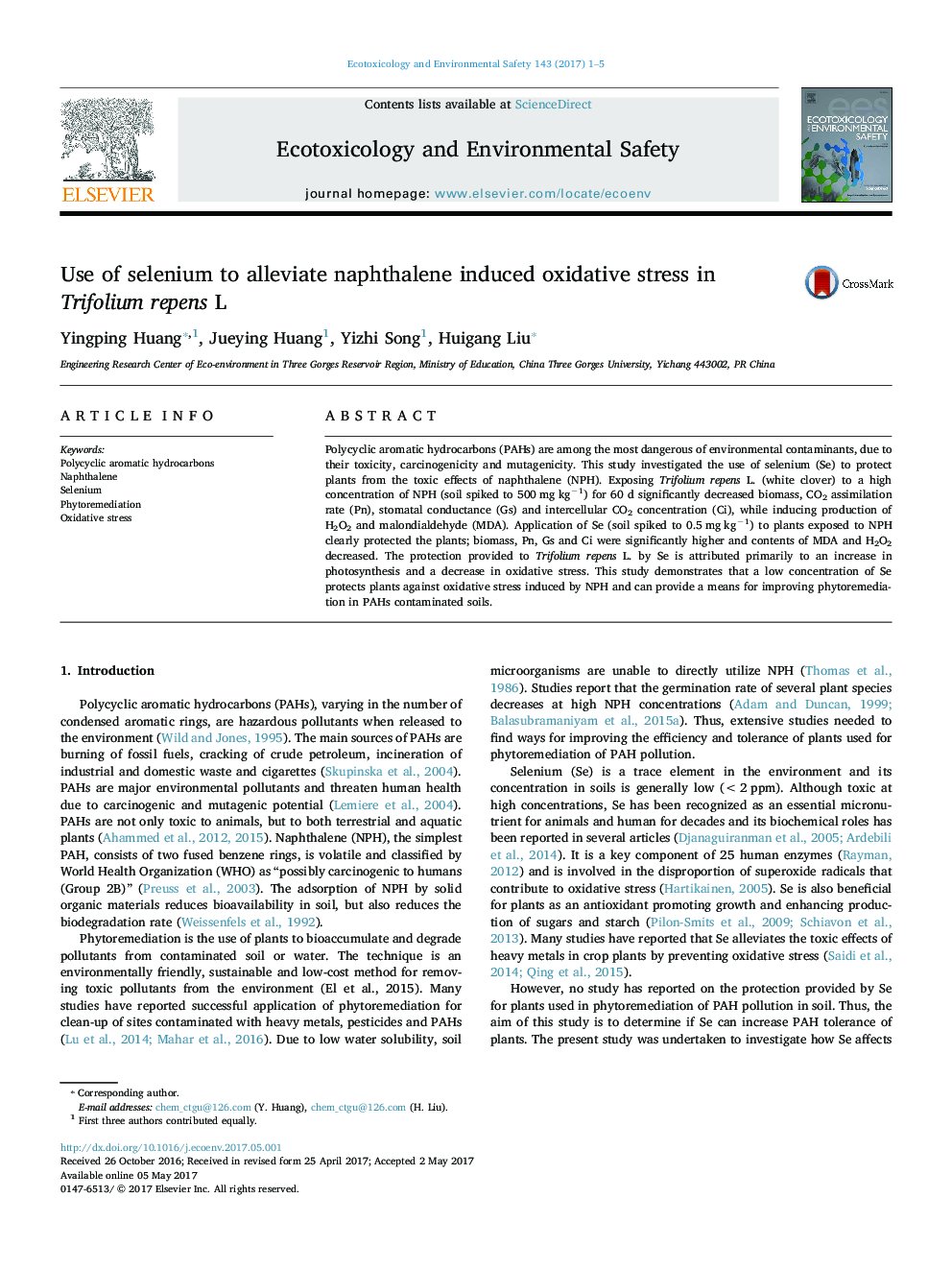| Article ID | Journal | Published Year | Pages | File Type |
|---|---|---|---|---|
| 5747574 | Ecotoxicology and Environmental Safety | 2017 | 5 Pages |
â¢Low concentration of Se in soil enhances plant tolerance to high level of naphthalene.â¢Se might play the protective role against naphthalene toxicity to Trifolium repens L.â¢Se might improve phytoremediation in naphthalene contaminated soils.
Polycyclic aromatic hydrocarbons (PAHs) are among the most dangerous of environmental contaminants, due to their toxicity, carcinogenicity and mutagenicity. This study investigated the use of selenium (Se) to protect plants from the toxic effects of naphthalene (NPH). Exposing Trifolium repens L. (white clover) to a high concentration of NPH (soil spiked to 500 mg kgâ1) for 60 d significantly decreased biomass, CO2 assimilation rate (Pn), stomatal conductance (Gs) and intercellular CO2 concentration (Ci), while inducing production of H2O2 and malondialdehyde (MDA). Application of Se (soil spiked to 0.5 mg kgâ1) to plants exposed to NPH clearly protected the plants; biomass, Pn, Gs and Ci were significantly higher and contents of MDA and H2O2 decreased. The protection provided to Trifolium repens L. by Se is attributed primarily to an increase in photosynthesis and a decrease in oxidative stress. This study demonstrates that a low concentration of Se protects plants against oxidative stress induced by NPH and can provide a means for improving phytoremediation in PAHs contaminated soils.
